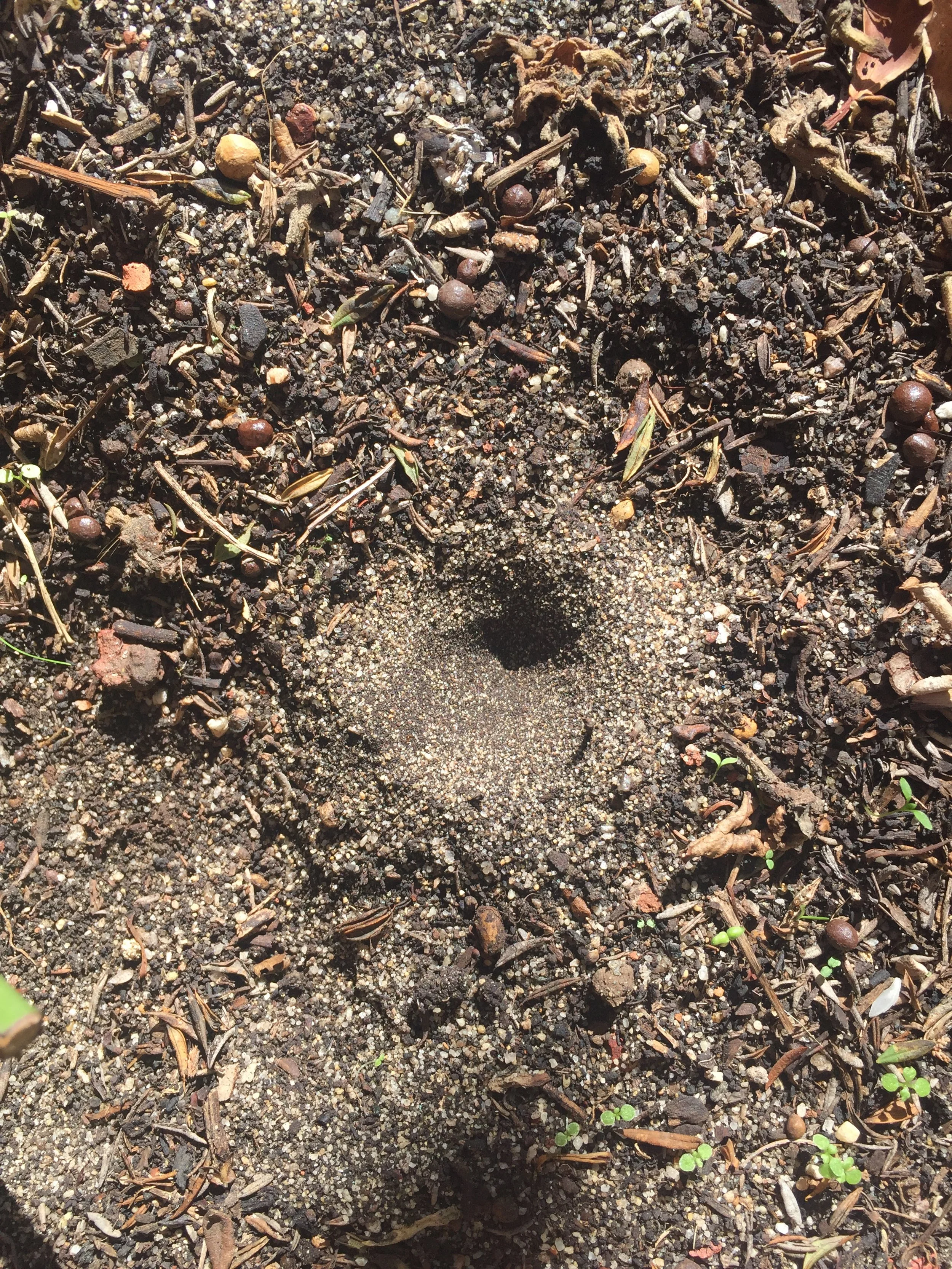On Country
How Water Moves in Plants
Angle of a Projectile from an antlion’s pit
Reference:
http://www.antlionpit.com/antlions.html
Follow the prompts to the antlion behaviour and life cycle.
• The antlion (the larva of the Lace-wing fly) digs a pit in loose dry sandy soil with a spiral action, throwing the sand up and outwards with its head. It appears to be selecting the size of the sand grains, as it throws the larger ones out, retaining the finer ones.
• In addition, it engineers the angle of the side of the pit to 30o. This ensures the fine particles (which will have less momentum) stay on sloping walls, while larger particles (which will have greater momentum) tend to fall to the centre, the fate of a future prey.
• It is thus the size of the sand grain and the angle of the sides of the pit that ensure an ant will be carried into the waiting jaws, just visible at the bottom of the pit.
• The antlion clamps them around the prey, injects a toxin and proceeds to suck the soft inner parts of the ant.
• When finished, it tosses the exoskeleton of the ant out of the pit – at an angle of 45o.
• This is the angle (well known to javelin throwers), that will maximise the distance travelled of a thrown (or projected) object.
Activity
Using the scale (angle/ distance), predict what might happen to the prey remains if the antlion alters its angle of throw (presuming it uses the same force with each throw):
1. Draw the pit, indicating where the prey remains will land at each angle.
2. Predict the length of the radius of the pit that will maximise the prey remains landing outside the pit.
Antlion trap
Antlion

